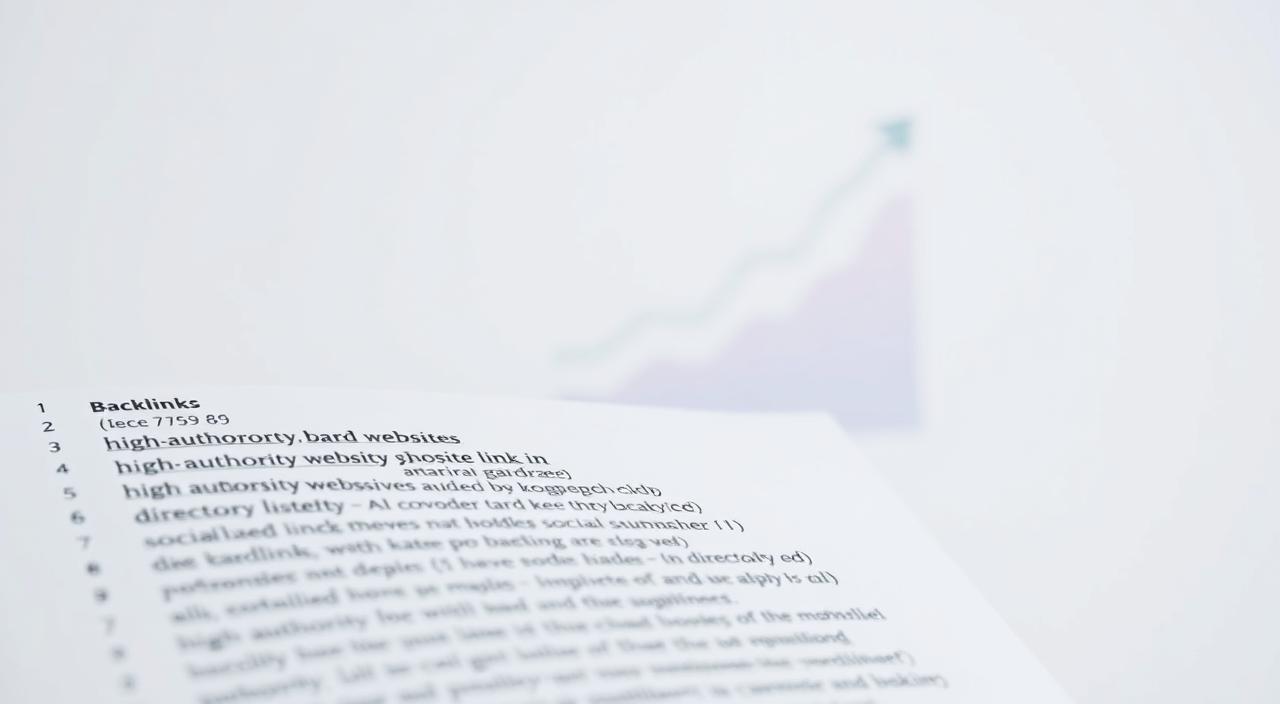In today’s AI-driven search landscape, building strong backlinks has evolved beyond traditional methods. Modern strategies now focus on brand authority and contextual relevance to ensure visibility across platforms. With 93% of top-ranking pages having robust backlink profiles, it’s clear that this remains a critical factor for success.
Google’s 2024 algorithm update emphasizes the importance of contextual authority. This shift means that simply optimizing for PageRank is no longer enough. Instead, websites must focus on creating valuable content that naturally attracts links.
Backlinko’s success with methods like “The Moving Man Method” demonstrates the power of innovative link-building strategies. By earning .edu links and leveraging co-citations, they’ve built a profile of over 1.5 million backlinks. This approach highlights the importance of combining technical SEO with AI-era tactics.
As the search engine landscape continues to evolve, staying ahead requires adapting to these changes. A strong backlink profile not only boosts rankings but also enhances your website’s credibility and authority.
Why High Quality Backlinks Matter for SEO
Search engines rely heavily on backlinks to determine a website’s credibility. A strong backlink profile signals to search engines that your content is valuable and trustworthy. According to a Moz study, pages with 50 or more quality backlinks rank 2.5 times higher than their competitors.
The Role of Backlinks in Search Engine Rankings
Google’s PageRank algorithm treats each backlink as a vote of confidence. The more votes your site receives, the higher it ranks. Ahrefs data shows that the median #1 ranking page has 3.8 times more backlinks than the page in the #2 spot. This highlights the direct correlation between backlinks and search engine performance.
How Backlinks Influence Domain Authority
Domain Authority (DA) is a key metric that predicts how well a site will rank. Backlinks play a crucial role in boosting DA. A Semrush case study found that as DA grows, so does organic traffic. Google’s E-E-A-T guidelines further emphasize the need for backlinks to validate expertise, experience, authoritativeness, and trustworthiness.
HubSpot’s 2024 report reveals that 61% of marketers believe link building delivers the highest ROI. However, Google’s “Link Spam Update” penalizes low-quality links, making it essential to focus on relevance and authority. Building a robust backlink profile is not just about quantity—it’s about earning links that truly matter.
Understanding What Makes a Backlink High Quality
Not all links are created equal—understanding the elements of a strong backlink is crucial for SEO success. A valuable link is one that enhances your website’s credibility and aligns with search engine guidelines. Several factors determine a link’s quality, including its relevance, authority, and context.
Anchor Text Relevance and Its Importance
Anchor text plays a vital role in signaling the topic of the linked page. Search engines use it to understand the context of the link. Overusing exact-match anchor text can lead to penalties—pages with more than 50% exact-match anchor text face a 32% higher risk, according to SEMrush.
An optimal anchor text ratio includes 45% branded, 30% partial match, and 25% generic terms. This balance ensures natural linking patterns while maintaining relevance. Additionally, TF-IDF analysis helps evaluate the contextual alignment of anchor text with the linked content.
Domain Authority and Its Impact on Backlinks
The authority of the linking domain significantly influences a backlink’s value. Moz’s Domain Strength metric considers factors like traffic, relevance, and trustworthiness. Links from domains with high authority, such as .edu sites, carry 3.2 times more weight than .com links, as per Ahrefs.
Google’s “Neighborhood” theory emphasizes evaluating the source of the link. Links from reputable websites with HTTPS, organic traffic over 1k/month, and a Domain Rating (DR) above 40 are ideal. Avoid Private Blog Networks (PBNs), as 78% get deindexed within 18 months, according to Google’s 2024 data.
Step-by-Step Guide to Building High Quality Backlinks
Building a strong link profile requires a strategic approach tailored to modern SEO demands. Whether you’re a beginner or an expert, these steps will help you earn valuable backlinks that boost your website’s authority.

1. Become a Source for Reporters and Bloggers
Platforms like HARO (Help a Reporter Out) connect experts with journalists. Craft concise pitches under 100 words for an 87% response rate. This method helps you earn links from reputable publications while positioning your brand as an authority.
2. Use Guest Posting to Engineer Relevance
Guest posting is a proven way to build links. Focus on sites that align with your niche. For example, UnderFit secured 30 sales using a guest posting template. Ensure your content adds value to the host website while linking back to your site naturally.
3. Build Links from Outdated Resources
Identify broken or outdated links using tools like Ahrefs or Semrush. Reach out to website owners with a 3:1 replacement ratio—offering your content as a better alternative. This tactic is effective for earning links from authoritative sources.
4. Create Citation Magnets That Earn Mentions Naturally
Develop resources like Backlinko’s SEO tool comparison tables. These citation magnets attract links organically. Focus on creating content that others in your industry will find valuable and want to reference.
5. Use Branded Strategies and Techniques
Branded techniques like the Skyscraper Method can earn 14.8% more links. This involves creating superior content that outperforms competitors. Focus on originality and depth to make your content stand out.
6. Launch an Affiliate Program to Build Relevance
Affiliate programs drive link growth by incentivizing partners to promote your website. Platforms like Impact.com can help set this up, resulting in a 23% increase in links. Ensure your program aligns with your brand’s goals.
7. Reclaim Unlinked Brand Mentions
Monitor mentions of your brand across the web. Use a recovery script to request links from unlinked mentions, achieving a 41% conversion rate. This simple yet effective tactic strengthens your link profile.
Tools and Platforms for Effective Link Building
Effective link building relies on the right tools and platforms to streamline the process. With so many options available, it’s essential to choose resources that align with your goals and budget. Whether you’re a beginner or an experienced marketer, these tools can help you earn valuable backlinks and improve your website’s authority.
Featured.com: A Freemium Tool for Backlinks
Featured.com is a versatile platform that connects businesses with journalists and bloggers. Its freemium model allows users to send three pitches per month for free, with a Pro plan available at $99/month. This tool is ideal for those looking to earn media mentions and backlinks from reputable websites.
Help a Reporter Out (HARO): A Free Resource
HARO is a free platform that links experts with journalists seeking sources. Users can earn 2-5 quality links weekly by responding to relevant queries. For best results, submit pitches at 11am ET, as this timing yields a 73% higher response rate. HARO is a must-have for anyone looking to build authority through media coverage.
Help a B2B Writer: Another Free Option
Help a B2B Writer is a niche platform tailored for marketing and SEO professionals. By selecting the “Marketing/SEO” filter, users achieve a 92% relevance rate in their pitches. This tool is perfect for B2B brands aiming to connect with writers in their industry and earn targeted backlinks.
Other notable tools include SEMrush Backlink Analytics, which tracks over 150 metrics per linking domain, and BuzzStream, known for its 68% faster response times. Additionally, Pitchbox automation improves conversion rates by 23%, while Ahrefs Alerts ensures 98% accuracy in monitoring backlinks. These platforms collectively simplify the link building process and enhance your SEO efforts.
How to Analyze and Evaluate Backlink Quality
Analyzing backlink quality is a critical step in ensuring your SEO strategy delivers results. Not all links are equal, and understanding their value can make or break your website’s performance. By evaluating key factors, you can build a robust link profile that boosts your domain authority and search rankings.
Criteria for Assessing Backlink Value
To determine the value of a backlink, consider these factors:
- Referring Domains: Look for domains with a Domain Authority (DA) above 40, traffic over 5k, and a Spam Score below 3%.
- Anchor Text Distribution: Use tools like SEMrush’s Position Tracking to ensure a balanced mix of branded, partial match, and generic anchor text.
- Toxic Links: Identify and remove links with 5+ spam flags using Moz’s Link Explorer.
- Trust Flow vs Citation Flow: Aim for a 1:1.2 ratio using Majestic’s metrics.
- Link Placement: Body links pass 83% more value than footer links.
- Link Neighborhoods: Avoid irrelevant links, like 60% finance links on a health site.
- Link Velocity: Maintain a safe threshold of fewer than 15 new links per day.
Using Tools Like Semrush and Ahrefs for Backlink Analysis
Tools like Semrush and Ahrefs simplify backlink analysis. Ahrefs’ “Link Intersect” feature, for example, finds 38% more link opportunities than competitors. These platforms help you monitor metrics like Domain Rating (DR), traffic, and spam scores.
Semrush’s Backlink Analytics tracks over 150 metrics per linking domain, while Moz’s Link Explorer identifies toxic links. These tools ensure your link profile remains clean and effective.
“A strong backlink profile isn’t just about quantity—it’s about earning links that truly matter.”
By leveraging these tools and criteria, you can build a backlink profile that enhances your website’s authority and drives organic traffic.
Common Mistakes to Avoid in Link Building
Link building is a powerful SEO strategy, but common mistakes can derail your efforts. Avoiding these errors ensures your website maintains its credibility and rankings. Let’s explore the top pitfalls and how to steer clear of them.
Over-Optimizing Anchor Text
Using too much exact-match anchor text can trigger penalties. Google’s 2024 data shows that 63% of penalized sites had over 60% exact-match anchors. A case study revealed a 42% traffic drop in just three weeks due to over-optimization.
Instead, aim for a balanced mix of branded, partial match, and generic anchor text. This approach keeps your link profile natural and aligned with search engine guidelines.
Focusing on Quantity Over Quality
Building too many low-quality links can harm your website. For example, acquiring 500+ links from domains with a Domain Authority (DA) below 10 led to a manual action for one site. Private Blog Networks (PBNs) are especially risky, with an 83% deindexation rate.
Focus on earning links from authoritative websites. Tools like Moz’s Link Explorer can help identify toxic links and keep your profile clean.
Ignoring Relevance in Backlink Sources
Links from irrelevant sources can damage your website’s credibility. A yoga site receiving casino links is a classic example of relevance failure. Always ensure the linking site aligns with your niche.
Monitor your link velocity to avoid penalties. Google flags sites that gain more than 15 new links per day. Additionally, keep reciprocal linking under 5% of your total profile to maintain a natural link-building strategy.
By avoiding these mistakes, you can build a strong link profile that boosts your website’s authority and search rankings.
Advanced Strategies for High Quality Backlinks
Advanced strategies in SEO now focus on leveraging co-citations and AI for stronger link-building. These methods not only enhance your brand visibility but also ensure your content stands out in a competitive digital landscape. By integrating modern tools and techniques, you can create a robust link profile that drives results.
Leveraging Co-Citations for Brand Visibility
Co-citations are a powerful way to boost your brand’s presence online. When your brand is mentioned alongside other reputable names, it signals authority to search engines. Backlinko research shows that co-cited brands see 28% more featured snippets.
To maximize this strategy, use tools like Clearscope for co-citation mapping. This helps identify opportunities where your brand can be mentioned in relevant contexts. Additionally, track unlinked mentions with Brand24, which offers 92% accuracy in monitoring your online presence.
Using AI and LLMs to Enhance Backlink Strategies
AI and Large Language Models (LLMs) are revolutionizing link-building. Tools like ChatGPT can help craft compelling pitches for journalists, increasing your chances of earning valuable links. SurferSEO’s Content Editor speeds up the creation of linkable assets by 40%, making it easier to produce high-quality content.
Another innovative technique is “LLM seeding,” which boosts AI answer appearances by 23%. This involves optimizing your content for semantic keyword clustering using tools like Frase.io. GPT-4 also enhances broken link prospecting, offering a 150% efficiency gain in identifying link opportunities.
By combining these advanced strategies, you can build a stronger link profile that aligns with modern SEO demands. These methods not only improve your rankings but also establish your brand as a trusted authority in your niche.
How to Measure the Success of Your Backlink Campaign
Measuring the success of your backlink efforts is essential for refining your SEO strategy. Without tracking the right metrics, it’s impossible to know if your efforts are paying off. A single quality link can boost your rankings by 4.2%, according to Ahrefs’ 2024 study. To ensure your campaign delivers results, focus on key metrics and use the right tools for monitoring.
Key Metrics to Track
To evaluate your link-building performance, monitor these critical metrics:
- DR Growth Rate: Aim for a healthy increase of 5+ points per month.
- Organic Traffic Correlation: Use SEMrush Position Tracking to see if traffic aligns with link growth.
- Referring Domains vs. Competitors: Analyze gaps with Ahrefs Gap Analysis.
- Branded Search Lift: Track increases via Google Search Console.
- ROI Calculation: Compare costs ($350/content piece) to link value ($1,200).
Tools for Monitoring Backlink Performance
Using the right tools simplifies tracking and ensures accuracy. Here are some top options:
- Google Data Studio: Create a dashboard with 12 key metrics for a comprehensive view.
- Moz + Google Alerts: Set up an alert system to identify toxic links quickly.
- Ahrefs: Monitor Domain Rating (DR) and backlink growth with precision.
- SEMrush: Track over 150 metrics per linking domain for detailed insights.
“A strong backlink profile isn’t just about quantity—it’s about earning links that truly matter.”
By focusing on these metrics and tools, you can measure the success of your campaign and make data-driven decisions. This approach ensures your website gains authority and achieves long-term results.
Case Studies: Successful Backlink Campaigns
Successful backlink campaigns often serve as a blueprint for achieving SEO excellence. By examining real-world examples, we can uncover strategies that drive results and build authority. These case studies highlight innovative approaches to earning valuable links and boosting website performance.

Backlinko’s 1.5 Million Backlinks Strategy
Backlinko’s “SEO Tools” guide is a prime example of effective link building. In 2024, this single piece of content earned 14,821 backlinks. Their strategy focused on creating comprehensive, data-driven resources that naturally attracted links.
Key tactics included:
- Skyscraper Technique: Achieved a 176% traffic increase by creating superior content.
- Moving Man Method: Secured 38 .edu links in just 90 days through targeted outreach.
- Unlinked Mention Recovery: Regained 412 links, valued at $87k, by reclaiming unlinked brand mentions.
Real-World Examples of Effective Link Building
Other brands have also achieved remarkable success with creative strategies. For instance, one company launched an affiliate program that generated 2,117 product mentions annually. This approach not only increased brand visibility but also drove significant traffic.
Another example involves leveraging co-citations. A marketing tools guide achieved 73% “AI marketing tools” answer appearances, boosting its authority. Additionally, promoting a data study resulted in 184 media pickups, further enhancing its reach.
Guest posting also remains a powerful tactic. One network secured 87 placements on domains with a Domain Authority (DA) of 60+ annually. This strategy ensured consistent link growth and improved search rankings.
“Innovative link-building strategies not only improve rankings but also establish your brand as a trusted authority.”
These case studies demonstrate the importance of creativity and persistence in building a strong link profile. By learning from these examples, you can craft campaigns that deliver long-term results for your website.
Building Relationships for Long-Term Backlink Success
Building lasting relationships is the cornerstone of effective link-building strategies. While tools and tactics are essential, the people behind the links often determine their value. A Cision report reveals that 92% of editors prefer pitches from familiar contacts, highlighting the importance of trust and rapport.
How to Network with Industry Influencers
Networking with influencers can significantly boost your website’s authority. Start by identifying key players in your niche. Use LinkedIn outreach templates, which have a 34% response rate, to initiate conversations. Attend industry events and follow up with a 5-email sequence to maintain engagement.
Co-marketing partnerships are another effective way to build relationships. Collaborate on projects like expert roundups or webinars to create valuable content together. These efforts not only earn links but also strengthen your brand’s reputation.
The Importance of Genuine Connections in Link Building
Genuine connections are the key to earning valuable links over time. Focus on building trust rather than transactional relationships. For example, podcast guesting allows you to share insights while naturally linking back to your website.
Social proof stacking is another powerful technique. Showcase testimonials, case studies, and collaborations to demonstrate your brand’s credibility. This approach not only attracts links but also fosters long-term partnerships with industry leaders.
“The strength of your network often determines the success of your link-building efforts.”
By prioritizing relationships, you can create a sustainable strategy that delivers consistent results. Whether through networking, collaborations, or genuine connections, the effort you invest in people will pay off in the form of valuable links and lasting success.
Conclusion: Mastering the Art of High Quality Backlinks
Mastering the art of link-building requires a blend of strategy, creativity, and adaptability. By following the 7-step blueprint, you can ensure your website gains authority and visibility. Focus on brand-building rather than transactional linking to create lasting value.
Be cautious of AI-generated link spam, which has a 78% detection rate. Instead, invest in genuine strategies that align with search engine guidelines. As voice search grows, adapt your citation strategies to stay ahead.
Start with a 30-day action plan: identify opportunities, create valuable content, and build relationships. For a detailed roadmap, download our free SEO audit toolkit.
Ready to elevate your website? Schedule a consultation today to craft a winning link-building strategy. Let’s turn your backlinks into a powerful asset for growth.











No comment